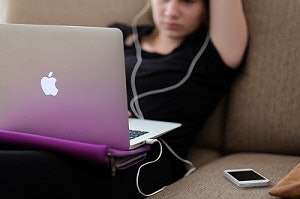Since the University of Southern California’s campus closed amid the coronavirus pandemic, going to class looks a little different for junior Andrea Alba.
A first-generation low-income student, Alba now shares a room with her two brothers, ages 16 and 25, in her family’s two-bedroom house. Her parents, who work at USC, are also at home, waiting on emails about what their work will look like during the campus shutdown. There’s no room where she can be alone to take her online courses.
“If I go in my room, my brothers are there. If I’m in the kitchen, if I’m in the living room, someone’s always there,” Alba says. “I don’t have space to be as productive as I can. I don’t have space to do my classes comfortably.”
Meanwhile, she has a payment due to the university for her dorm 
In the past month, Alba and classmates like her have faced new uncertainty and a slew of extra costs. Universities are working hard to respond to the coronavirus crisis, but for students who rely heavily on campus resources like food, housing and healthcare, there are a growing list of needs. Meanwhile, the virus also dealt a financial blow to minority serving institutions, which serve high percentages of underprivileged students.
A survey by Course Hero, which offers academic resources online, bears out just how diverse the needs of low-income students are in the wake of the coronavirus pandemic. The education technology company is opening a student emergency relief fund, and, in doing so, analyzed students’ applications to get a better sense of low-income students’ costs. A breakdown of responses from 15,000 students from about 4,000 universities showed that money for rent and food each made up a quarter of students’ overall financial need, followed by costs associated with lost jobs and technology like laptops and Wi-Fi.
Qualitative data from the survey reveals an even wider array of challenges. Students asked for funds to pay for gas, medication, household cleaning products, car repairs, feminine products and so on.















